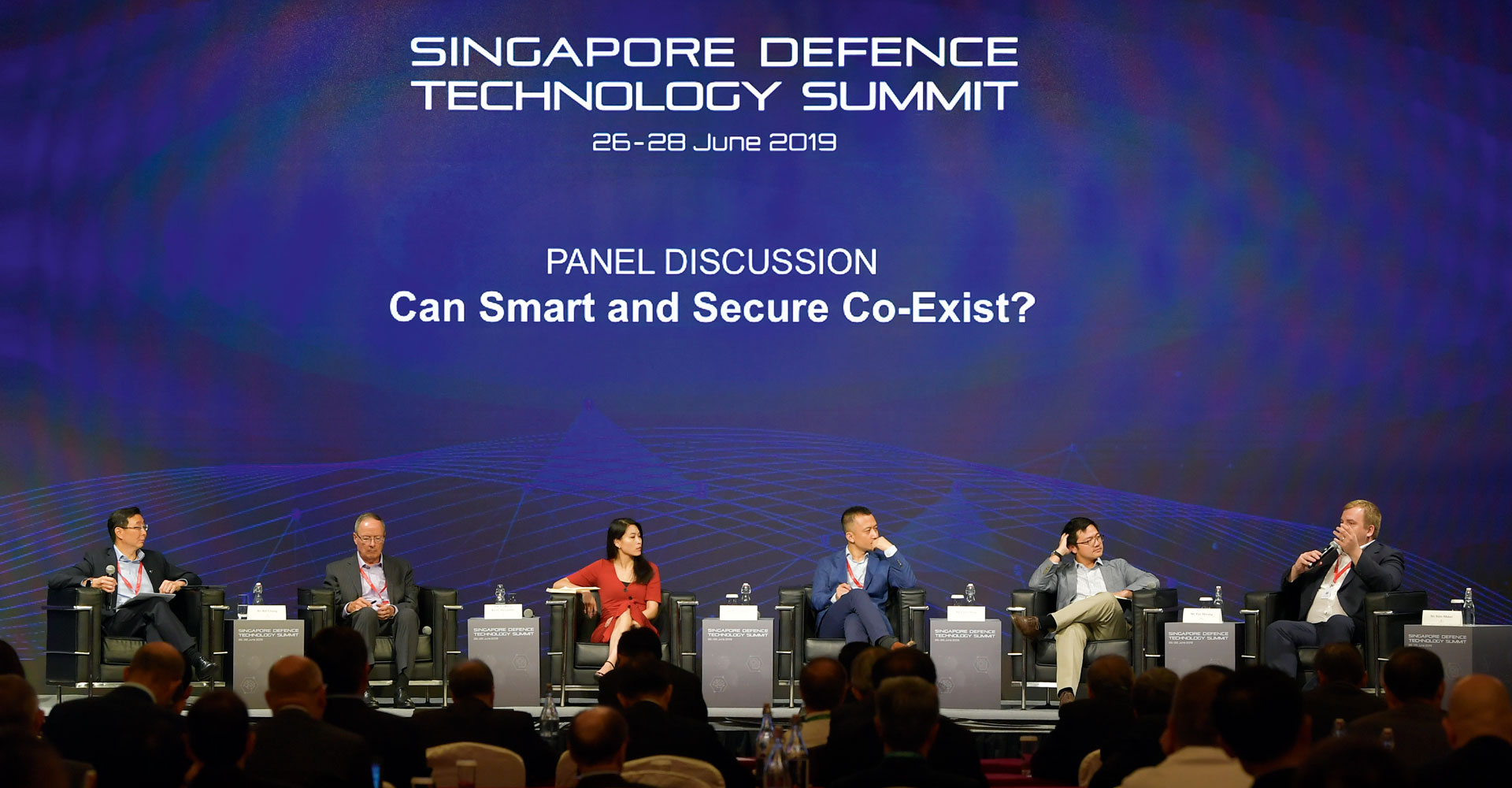DEFENCE TECH INSIGHTS
Innovation leaders from around the world gather for the second Singapore Defence Technology Summit.// STORY Thrina Tham
// PHOTOS PIONEER Photographers
Secrets are closely guarded in the technology environment, which continues to be increasingly contested. Despite this, about 400 delegates from more than 23 countries gathered in Singapore to discuss technology and its impact on defence and society.
Defence Minister Dr Ng Eng Hen noted that this was good news, adding that Singapore's role as host was to create a conducive environment to address common challenges.
He was speaking at the opening dinner of the Singapore Defence Technology Summit, which was held from 26 to 28 Jun at Shangri-La Hotel.
PIONEER breaks down the top five issues discussed at this year's tech summit.
#1: Rules of engagement for cyberspace needed
Militaries are being "re-shaped" by threats and opportunities in the cyber domain, yet the rules of engagement in this battlefront remain vague.
Dr Ng made this point as he pushed for common rules when operating in the cyber arena. "There is an urgent need for a rules-based order that will prevent serious disruptions (and) protect the functioning of society…especially when the cyber arena will become more contested."
He cited that Germany's armed forces have scaled up investments in cyber capabilities while the United States (US) Department of Defence (DoD) has been given the mandate to respond to aggressors with cyber counter-attacks.
Dr Ng added that the Singapore Armed Forces' (SAF's) approach is for operational units to work closely with the defence technology community, where "scientists, engineers and military operators…define the problem and desired outcomes together before embarking on the design and implementation of concepts of operations".
#2: AI to act in our best interest
Machines can self-learn and make decisions faster than humans, but do they know the difference between right and wrong?
As we seek to harness the potential of Artificial Intelligence (AI), it is imperative to ensure that the technology continues to act in man's best interest, warned Senior Minister and Coordinating Minister for National Security Teo Chee Hean in his keynote speech on 27 Jun.
One way to do this would be by achieving "explainable AI" which is designed to explain how and why particular actions are taken, he said.
"The higher the stakes, the more important it is to explain (the actions). Explainable AI should also come with some safeguards to allow the human operator to override the system."
He noted that this could have helped avert the Boeing crashes in March, where flawed analyses by the plane's automated sensors could have contributed to the fatal crashes of two 737 MAX airliners.
#3: Smart and secure must coexist
Technology like data analytics and AI can do good for society, but it opens up privacy and data security issues.
This was raised by CEO of Intellifusion, Dr Chen Ning, during a panel session titled Can smart and secure co-exist?. His company's facial recognition system DeepEye has used AI technology to help catch criminals in Shenzhen, China.
"We are developing the regulation and laws to protect the data. We're looking for a good balance between tech advancement and data security," he said.
#4: Defence and commercial sectors should collaborate
Defence organisations have to reach out beyond the defence ecosystem to keep up with technological advancements, said DSTA Chief Executive Tan Peng Yam in an interview on 28 Jun.
Such collaborations could range from partnering other big organisations to working with start-ups and academia. "We recognise the importance of incorporating advanced technology for the SAF. To do this, DSTA needs to be adaptive…and embrace commercial technology."
DoD Assistant Secretary of the Air Force for Acquisition, Technology and Logistics, Dr Will Roper, said that the US Air Force is building an early connection with "the next generation of companies".
At a panel called Are agile defence establishments possible?, he said: "We're helping them grow, so they think of their products as commercial products but with a responsibility in national security as well.”
#5: Defence establishments must be agile
As technology grows rapidly, defence establishments have to be nimble to stay ahead.
"We need to be quick movers in tech… We (need) lean, agile practices to get us from idea to prototype," said Mr Roper.
Speaking on the same panel, Mr Chris Lynch, former Director and Founder of the US DoD's Defense Digital Service, said that defence missions should be tech-focused and "breathe on the flawless execution of tech".
Mr Lynch was responsible for the US' first bug bounty programme in 2016.
The "Hack the Pentagon" programme took only four months from forming the team to execution, he said.
"We wanted to have the trust of the hacker community that we could do it and the programme ended up becoming a model for other federal agencies to adopt."










